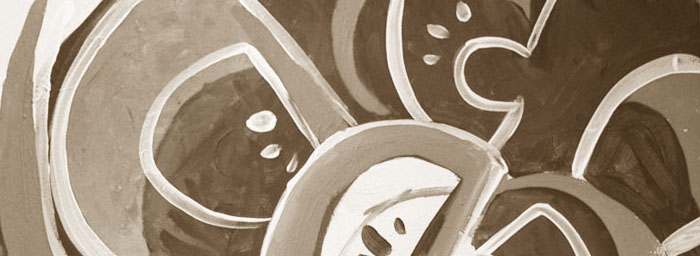Because my main complaint had been they don't say anything, they don't mean anything I asked him to elaborate. Everyone got to talking and we concluded that there was a big difference between reacting to a specific situation in such a way that your piece only referred to that situation, versus doing so in a more open way.
So, the sculpture featuring Uncle Sam wrapped up in both the American Flag and a snake? Tired and cliche first of all, but also preachy. If you had just anyone wrapped up in a snake and a sheet, then suddenly it's broad enough for anyone to react to it. Those who see the political in everything (or really, anyone in our politically-charged times) will see it as political. Those who are feeling squeezed and conflicted will see that. Peta activists will see it as the snake winning out against all odds. And so forth. Remember "theme" from your 7th grade English class? It's the same thing with art. There has to be something that is "true" enough, "attainable" enough to elicit a reaction from people now as well as people who will study you fifty years from now for it to be really 'good'.
Miscellaneous other things said:
1. Art that is made for the self will tend to be less preachy than art made for other people. (A good thought, but I think that art for the self can also be a bit self-involved for people to garner meaning from it. It's too temping to rely on in-jokes and in-imagery, and that's fine as long as it can mean something to other people as well. If it's too obscure, or too specific there, I think one risks alienation.)
2. The difference was established between feeling/emotion v. political preaching, yet it was hard for people to reconcile an intellectual response within that. I think some of that has to do with people not taking art history survey classes, so they wouldn't automatically go there, but then too I think people do need to THINK when they look at stuff, not just say
3. Something needs to provoke thought, not tell you how to think.

No comments:
Post a Comment